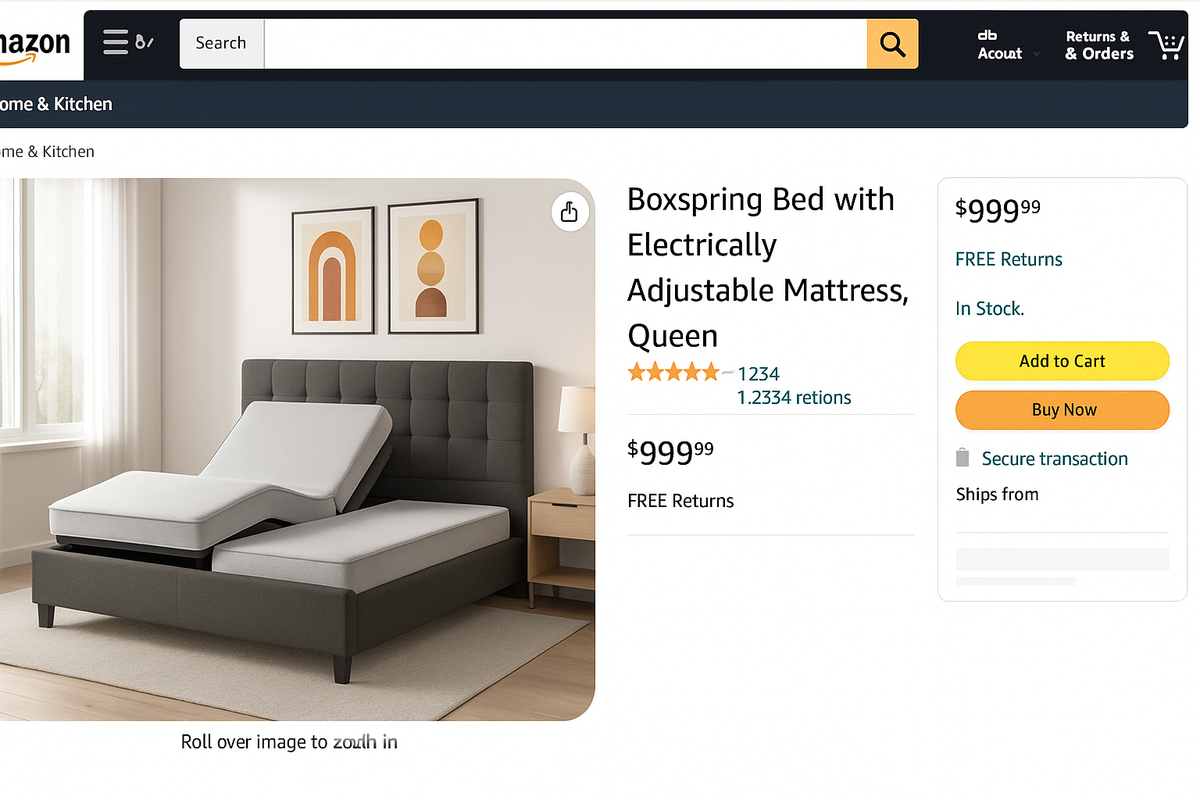Why Amazon Sellers Need to Think Like LLMs
Even if most sales happen on Amazon, discovery is shifting to AI-driven search. To stay visible, brands must go beyond keywords and show they understand real customer pain points. That’s how LLMs decide which products — and sellers — to recommend.

When I speak with founders and marketing teams of DTC brands, the conversation almost always starts with Amazon. And that makes sense: for many of the companies I work with — including clients like Cosyworld — Amazon is the primary sales channel. It’s where the customers are, it’s where the transactions happen, and it’s where the competition is fiercest.
But there’s a bigger shift happening in the background that every Amazon seller should be paying attention to: the rise of large language models (LLMs) as the starting point of consumer discovery. Google’s AI-powered search, ChatGPT browsing, and other assistants are already influencing the way people shop. And while it may seem far removed from the daily grind of managing product detail pages (PDPs) and running Sponsored Ads, it will change how your products get found.
Amazon Is the Storefront — But Discovery Is Changing
On Amazon today, winning is still about having the right keywords in your titles, bullets, and ads. You optimize for “adjustable bed” or “bed with head lift,” and you try to capture as much intent as possible.
The problem is: outside of Amazon, search behavior is moving away from single keywords. Someone no longer types “adjustable bed” into Google or ChatGPT. Instead, they ask:
“My partner snores and I can’t sleep — is there a bed that helps with that?”
If the only thing your content says is “we sell adjustable beds,” you won’t show up in that conversation. The AI doesn’t need you to define what an adjustable bed is; it already knows. What it needs is proof that you understand the context — the pain points that drive people to buy.
Why This Matters for Amazon Businesses
Here’s the paradox: even if 90% of your revenue comes from Amazon, you cannot ignore the LLM-driven shift in discovery. Why?
- LLMs feed on context. They don’t surface pages that only describe a product in generic terms. They surface answers that address situations and problems.
- Amazon content is training data. Your PDPs, reviews, and Q&As are being ingested by LLMs. If your content speaks to pain points (“helps reduce snoring,” “ideal for people with back pain,” “quiet motors that don’t wake your partner”), those exact phrases are more likely to be repeated in AI answers.
- Cross-channel discovery loops. A consumer might hear about “beds that help with snoring” from ChatGPT, then end up buying on Amazon. If your content isn’t present in the AI answer, you risk being invisible even if you’re the best seller in your category.
Tips to Align Your Amazon Strategy With LLM Behavior
From my experience working with Amazon brands internationally, here are three actionable ways to bridge the gap:
1. Rewrite PDPs around problems, not just features.
Don’t just say “independent head and foot lift.” Say “read comfortably in bed without disturbing your partner” or “reduce pressure points to ease morning back pain.”
2. Seed reviews and Q&A with situational language.
Encourage customers to describe why they bought, not just what they bought. LLMs love natural, contextual language.
3. Treat your Brand Store as a problem-solving hub.
Instead of only listing product categories, create sections like “Solutions for Back Pain” or “Better Sleep for Couples.” This mirrors the way AI queries are phrased and connects the dots for both humans and machines.
The Bigger Picture
Amazon will remain the place where people check out. But the journey that gets them there is shifting to AI-driven, conversational discovery. The brands that win will be those that don’t just chase keywords, but prove — in every piece of content, on and off Amazon — that they understand their customers’ pain points.
That’s what I focus on when I support clients like Cosyworld. It’s no longer enough to sell products. You have to show you understand problems. And in a world where AI is becoming the gatekeeper of attention, that is the only way to make sure your brand gets recommended, surfaced, and ultimately purchased.

